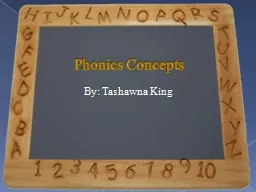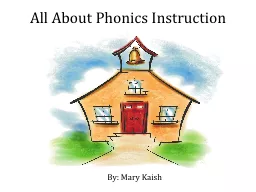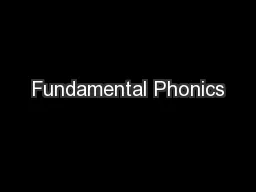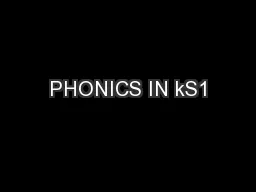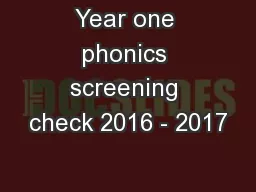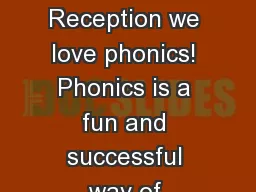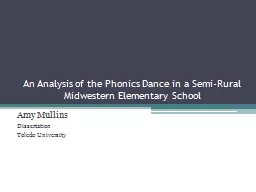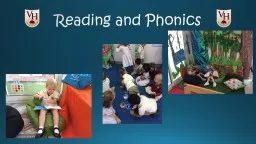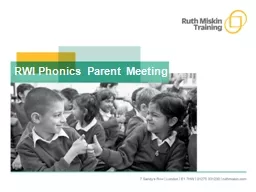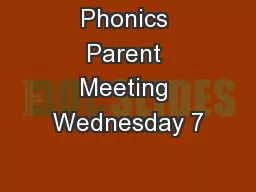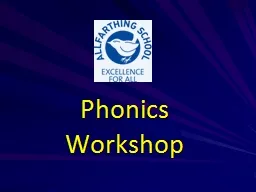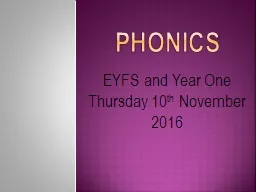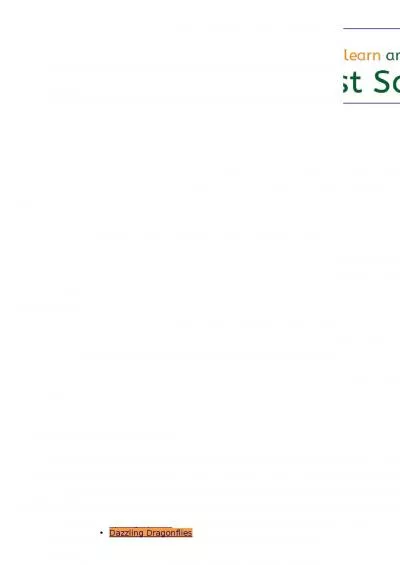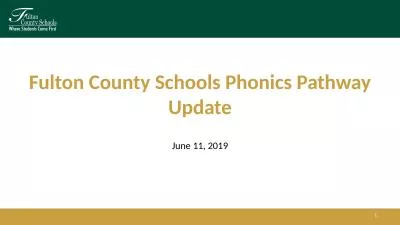PPT-Phonics Concepts
Author : natalia-silvester | Published Date : 2015-11-13
By Tashawna King Phonics Concepts P honics concepts include consonants v owels blending sounds into words phonograms phonics rules Phonics is the key to reading
Presentation Embed Code
Download Presentation
Download Presentation The PPT/PDF document "Phonics Concepts" is the property of its rightful owner. Permission is granted to download and print the materials on this website for personal, non-commercial use only, and to display it on your personal computer provided you do not modify the materials and that you retain all copyright notices contained in the materials. By downloading content from our website, you accept the terms of this agreement.
Phonics Concepts: Transcript
By Tashawna King Phonics Concepts P honics concepts include consonants v owels blending sounds into words phonograms phonics rules Phonics is the key to reading because without phonics students would not be able to recognize words spell or be a successful reader Phonics involves the association of phonemes or sounds with written symbols called graphemes Phonics is the key to word recognition. INSTRUCTION ON THE DECODING AND ENCODING. PERFORMANCES OF JUNIOR HIGH SCHOOL . EFL. STUDENTS IN TAIWAN. 字母拼讀教學對 . EFL. . 國中生讀字及拼字表現的影響. 指 導 教 . 授:鍾榮富. By: . Mary Kaish. Phonological Awareness and its Role in Phonics. The reading . process . can be described as . a . developmental . continuum on which children are first able to listen to sounds, rhyme, manipulate syllables (phonological awareness), differentiate individual sounds within words (phonemic awareness), and eventually associate these sounds with letters (phonics. A workshop for . parents and carers . Aims of this Session. 2. To share how phonics is taught at this school.. To develop your confidence in helping your children. with phonics and reading. To revise the basics of phonics and some useful phonics terms. Miss O’Boyle. Mrs Chowdhury . What is phonics?. It's all about sounds. There are 44 sounds in the English language, which we put together to form words.. Some are represented by one letter, like 't', and some by two or more, like '. What is the phonics screening check?. The Phonics Screening Check was introduced by the Government in June 2012 for all Year One pupils. . It . was designed . to give teachers and parents information on how your child is progressing in . How we teach reading in Reception.... 1. Phonics- Jolly Phonics. 2. Common Exception Words – Tricky Words. (From the Letters and Sounds Document . DfES. ). What is Jolly Phonics?. Jolly Phonics is a scheme that teaches children each letter name, sound and shape through: . Amy Mullins. Dissertation . Toledo University. Research Question. How does the use of the Phonics Dance curriculum impact first graders’ letter name and letter sound identification, phoneme segmentation ability and nonsense word reading skills compared to students taught with the Scott Foresman basal reading program?. To understand the importance of phonics.. To get an idea of how phonics is taught in school.. To understand the . progression. through phonic phases and how to support and develop children’s learning. . Why Phonics. ?. A complete literacy programme - systematic and structured. . Meets the . demands of the new national . curriculum, giving your children the . best chance of success in the national tests. . th. February 2018. Aims of the Workshop. RWI Phonics. RWI Storybooks. RWI Get Writing. Y1 Phonics Screening Test. Ways to practise at home. Read, Write, Inc. . ‘Read, Write Inc.’ (RWI) is a literacy programme by Ruth . Phonics Workshop What is Phonics? Phonics is linking letters to sounds e.g. knowing that the sounds c-a-t can be read and written as the word cat A phoneme is a sound A grapheme is a letter or number of letters that represent a phoneme (sound) e.g. the letter g represents the ‘g’ sound Thursday 10. th. November 2016. . Aims:. What is Phonics and why do we teach it. The . progression . of phonics through . Letter and . Sounds. H. ow . our Phonics lessons are . structured. The Phonics . The ability to read and write well is a vital skill for all children, paving the way for an enjoyable and successful school experience.. Phonics helps children to develop good reading and spelling skills. 1. Logistics. 2. Semester. K-2. 3-5. Fall 2017. 1 North and 1 South Cohort. X. Spring 2018. 1 North and 1 South Cohort. X. Fall 2018. 1 North and 1 South Cohort. 1 North and 1 South Cohort. Spring 2019.
Download Document
Here is the link to download the presentation.
"Phonics Concepts"The content belongs to its owner. You may download and print it for personal use, without modification, and keep all copyright notices. By downloading, you agree to these terms.
Related Documents

